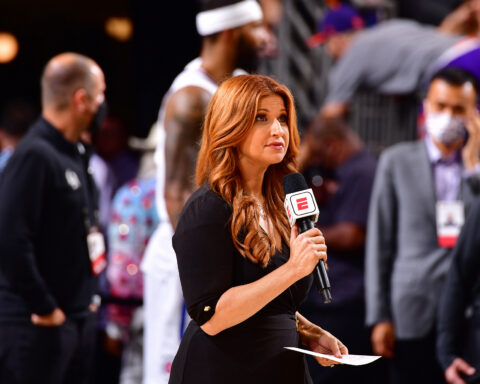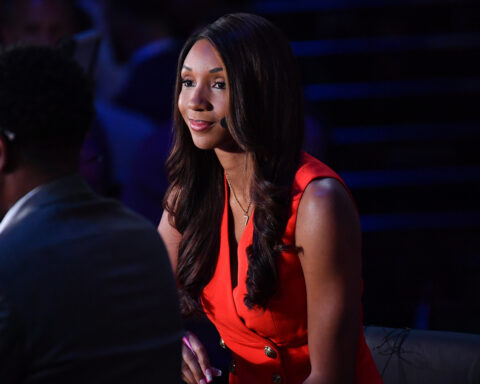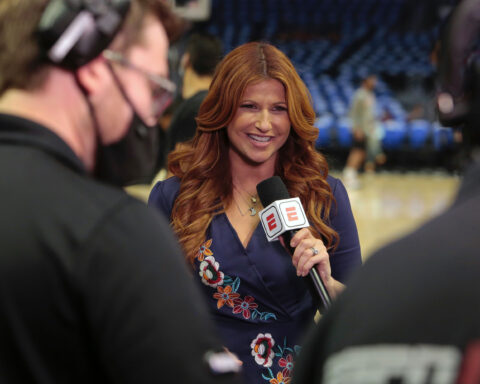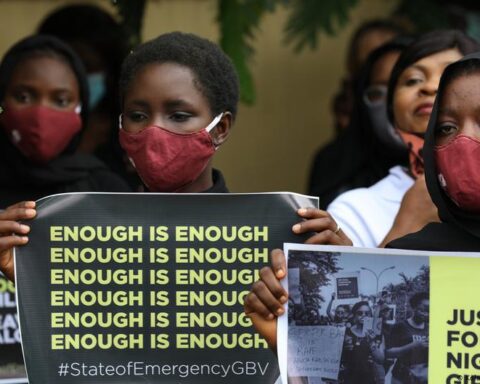So many women of color face a terrible, nagging fear every day, at school or at work or in their everyday lives: that the White women who publicly profess their commitment to racial inclusion are only engaging in a pantomime. There is constant worry that in private, their masks of woke tolerance come off and the derision of racial minorities, particularly minority women, comes out.
The latest confirmation of that fear comes from ESPN anchor Rachel Nichols. Nichols, who is White, has been at the center of a controversy stemming from a Sunday New York Times report on a leaked recording of a private July 2020 conversation she had with Adam Mendelsohn, agent to LeBron James. Nichols, who did not know that her video camera was on and was recording the call to an ESPN server — accessible by others — can be heard making demeaning statements about fellow ESPN anchor Maria Taylor, a Black woman, who was chosen to lead the coverage of last year’s NBA Finals, a role Nichols felt she herself deserved. “If you need to give her more things to do because you are feeling pressure about your crappy longtime record on diversity — which, by the way, I know personally from the female side of it,” Nichols is heard saying, “like, go for it. Just find it somewhere else. You are not going to find it from me or taking my thing away.”
Since the Times published its story, the firestorm has grown. Nichols offered an on-air apology on Monday, and said she has attempted to make a private one to Taylor. (“Maria has chosen not to respond to these offers, which is completely fair and a decision I respect,” Nichols said, according to the Times. An ESPN spokesman responded to the report by saying the situation was addressed with the input of a diverse group of executives and added, “We’re proud of the coverage we continue to produce, and our focus will remain on Maria, Rachel and the rest of the talented team collectively serving NBA fans.”)
ESPN announced Tuesday that another reporter, Malika Andrews, would serve as sideline reporter during the NBA finals instead of Nichols. On Wednesday, Taylor tweeted, “During the dark times I always remember that I am in this position to open doors and light the path that others walk down.” The National Association of Black Journalists called Wednesday for a meeting with executives from Disney and ESPN over their handling of the situation.
This controversy is growing in intensity in part because its true scope goes far beyond the world of media and sports. As writer Jemele Hill told the Los Angeles Times, the situation spotlights the longstanding failures by ESPN — failures many corporate entities share — to foster diversity and support Black talent. And at a deeper level, this recording captures candid sentiments too many White people express behind closed doors especially when Black, brown and indigenous women achieve success in the workplace.
Nichols, who has expressed her commitment to women’s empowerment, is shown in the recording to be what I would call a “white feminist.” As I argue in my book “Against White Feminism: Notes on Disruption,” it is possible to be White and a feminist and not be a “white feminist.” A “white feminist” is a woman who has successfully deployed feminism to further her ambitions but who nevertheless refuses to consider the role her Whiteness or White privilege have played in her successes.
White feminists see no problem with centering White women’s agendas and concerns as universal or in celebrating or perpetuating the lie that it is White women who have, at key moments in American history, won rights for all women.
Like Nichols, “white feminists” have their “things” — jobs, promotions, college admissions — which they have fought for, but they are unwilling to explore their own complicity in maintaining racist structures that co-exist with misogynist ones.
White feminists have been protecting their “things” since way back in American history. One example dates to the World’s Fair held in Chicago in 1893. That year, for the very first time, a group of White women managed to obtain the space and funds for a “Women’s Building” to showcase American women’s achievements from the past century. When Black women requested inclusion of some of their work in the building, the Board of Lady Managers in charge of the project — led by its president, wealthy White socialite Bertha Palmer — refused. It is hard, looking back now, not to imagine Palmer uttering a 19th century version of Nichols’s line. Perhaps something like: “Just find space somewhere else. You’re not going to find it from me or take away my building.”
In the century and a half that has passed since, American capitalism’s popularization of a Girlboss-esque model of the empowered woman has also done its part to thwart any actual solidarity or sisterhood between White women and women of color. Sadly, every time White women refuse to confront their complicity in a racist system, they destroy the possibility of transforming racist and misogynist structures themselves. Their losses have less meaning and their victories remain petty and small wins that merely maintain a misogynist status quo — at ESPN and everywhere else.
It is not that all White women lack the vocabulary or the concepts to understand and address racial discrimination within feminism. A few decades ago, legal scholar Kimberle Crenshaw came up with the term “intersectionality,” the premise holding that judges who analyze sexual discrimination cases against Black women had to consider their gender and their race. Without doing so, Crenshaw argued, it was not possible to truly understand the situation faced by Black women, who had been discriminated against based on both gender and racial grounds. In recent years, intersectional feminism, which recognizes how race and gender collude to oppress women of color, have become buzzwords. Despite the ubiquity of the term, too many White women — including, it seems, Nichols — clearly don’t understand or embrace it, if in private conversations with White men they paint being Black in the workplace and in many other places, as an unfair advantage, rather than a constant and consuming burden.
When I first read the New York Times report my heart just sank, because I too know the fear of conversations like this. This taped racist conversation between two admired, visible people — about another visible and admired person — will weigh heavily on all Americans of color. Its harsh truths will only add to the accrued mistrust, the congealed paranoia and imaginings about what they might hear on hypothetical tapes made of White colleagues, cops, teachers, customers, politicians and neighbors they encounter. Even as some White Americans continue to close their eyes, shut their ears and dismiss this kind of covert racism as not racism as all, the rest of us are left to wonder: how many tapes, how much proof will be enough for change?







